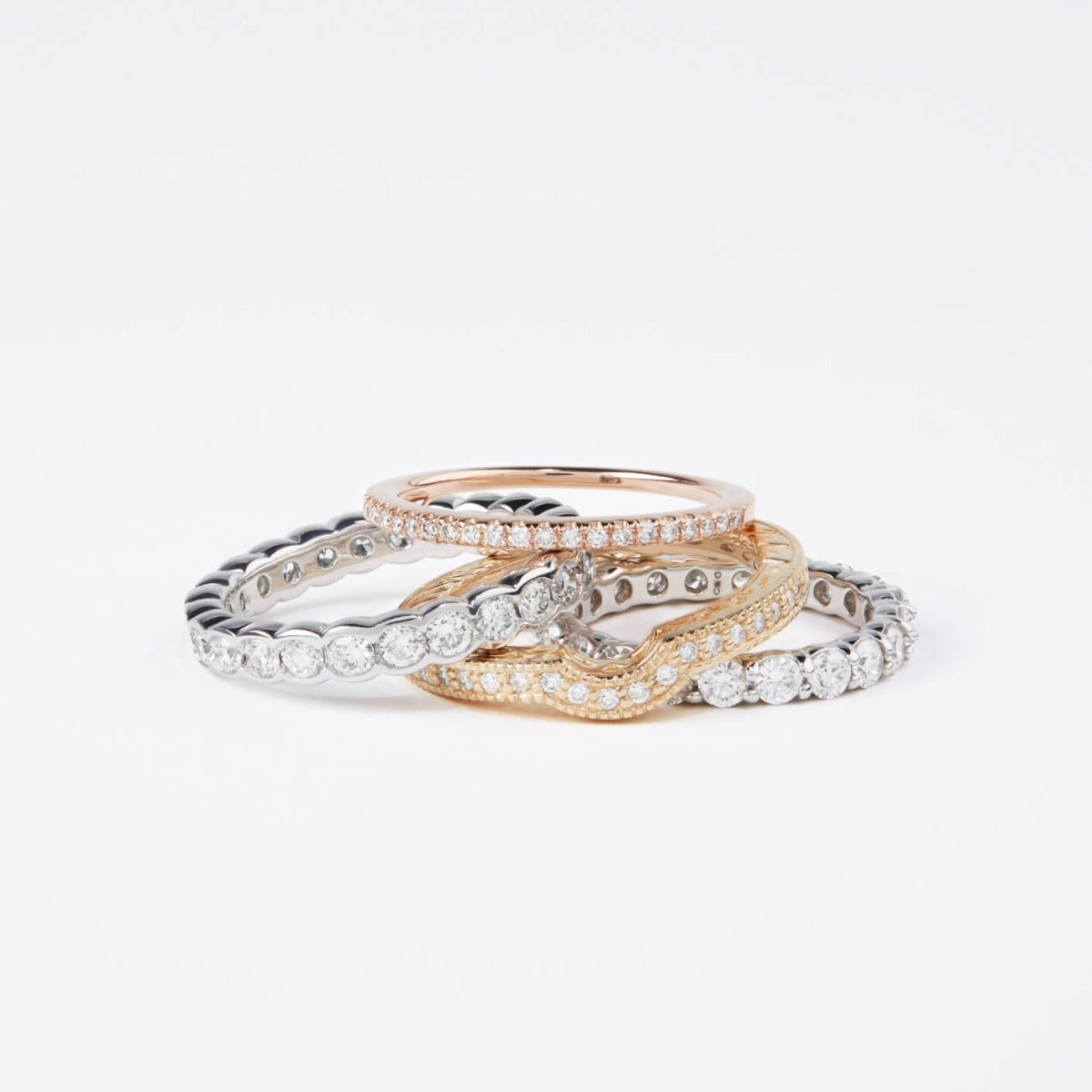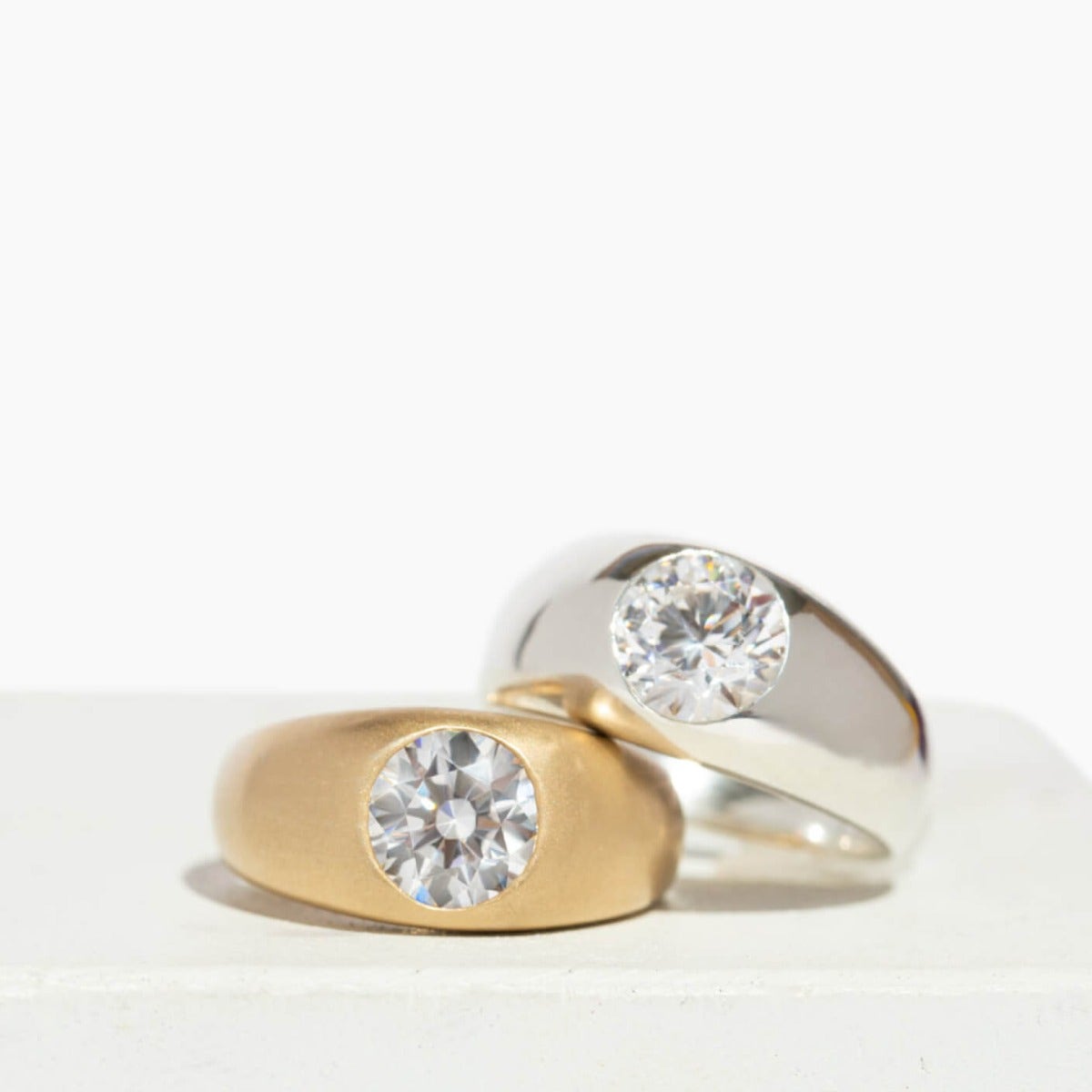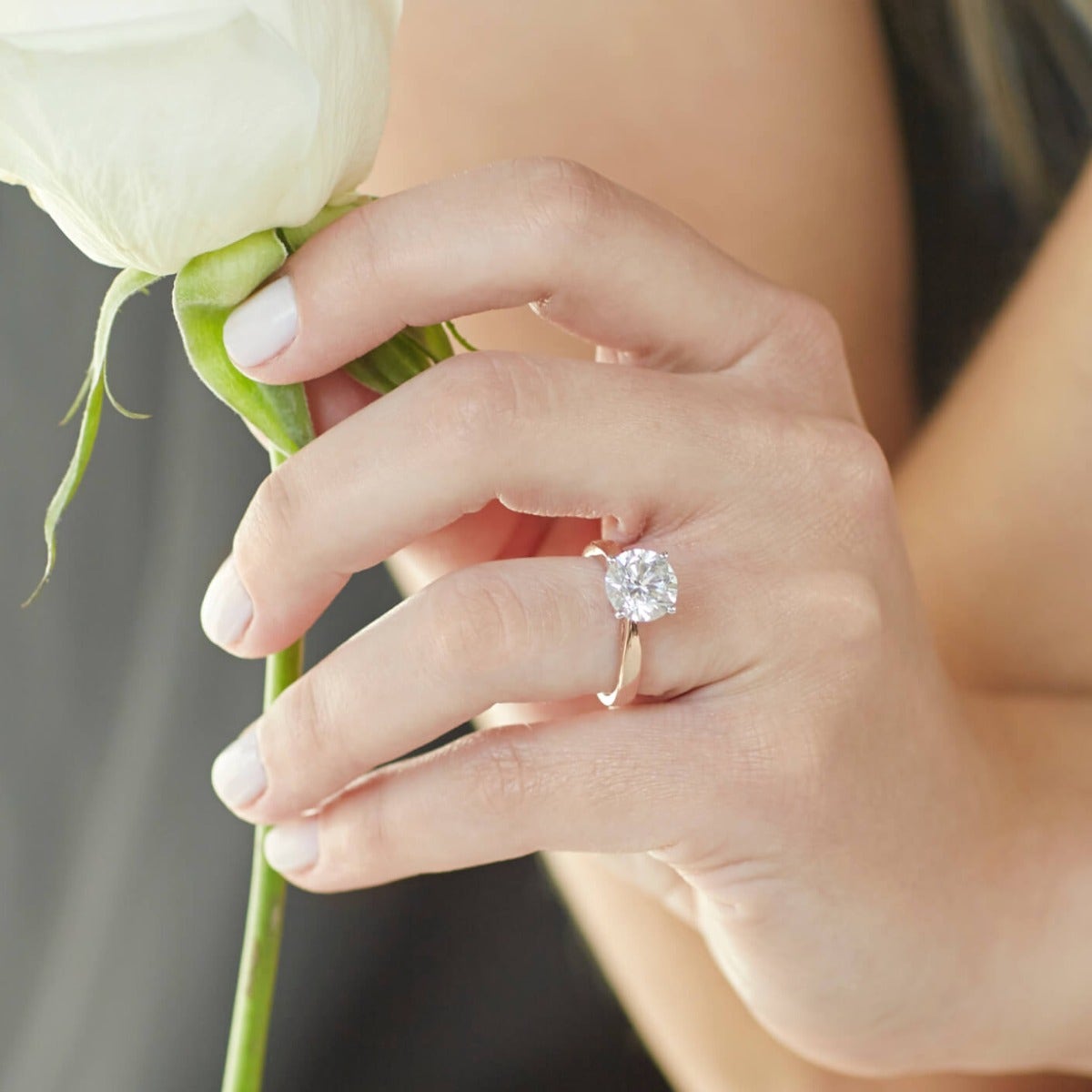Although the sparkle, shimmer, and ethics of choosing a lab grown diamond are always interesting to discuss, the setting of your engagement ring or other fine jewelry is just as important. This guide will help break down the different types of precious metals that we offer and where they are sourced.
Although there are various pros and cons of all the different types of metals, the one you or your partner chooses for an engagement ring really boils down to your personal preference. However, there are some small nuances that are important to understand before you make a purchase.
Before we get into the four different colors (white, yellow, rose gold, and platinum) let’s quickly touch on karat. You’ll notice that most of our rings come in 14k white, yellow, and rose gold, 18k white, and yellow gold. Our platinum is created with 90% pure platinum.
The only difference between 14k and 18k gold is how much true gold is present. Now you might be asking yourself, “isn’t the whole ring gold?”, but that’s not quite the case. 24k = 100% gold, so 18k = 75% gold, and 14k = 58.3% gold. To achieve other colors, pure gold is mixed with other metals and thus creates white, yellow, rose gold, or platinum.
However, since gold is a soft metal, the more true gold that is present, the softer the jewelry will actually be. So, since 14k has less karats of gold, it will be a bit more durable. This is good to know if you’re someone who is extremely active or works with their hands quite a bit, as you’ll likely want something that’s less likely to be damaged. Now, let’s break down each type of metal that we offer.




